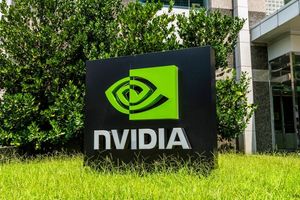MicroAlgo, Inc. - Ordinary Shares (MLGO)
5.6900
-0.4500 (-7.33%)
NASDAQ · Last Trade: Dec 26th, 6:46 PM EST
Detailed Quote
| Previous Close | 6.140 |
|---|---|
| Open | 6.120 |
| Bid | 5.670 |
| Ask | 5.740 |
| Day's Range | 5.660 - 6.120 |
| 52 Week Range | 5.980 - 972.00 |
| Volume | 189,637 |
| Market Cap | 98.78M |
| PE Ratio (TTM) | 10.16 |
| EPS (TTM) | 0.6 |
| Dividend & Yield | N/A (N/A) |
| 1 Month Average Volume | 92,494 |
Chart
About MicroAlgo, Inc. - Ordinary Shares (MLGO)
MicroAlgo, Inc. is a technology company that specializes in developing advanced software solutions and algorithms aimed at enhancing operational efficiencies for businesses. The company focuses on leveraging artificial intelligence and machine learning technologies to create innovative tools that streamline processes, analyze data, and optimize decision-making for various industries. By providing sophisticated analytics and automation capabilities, MicroAlgo empowers organizations to harness the power of their data, improve productivity, and drive growth in an increasingly competitive landscape. Read More
News & Press Releases

Via Benzinga · September 19, 2025
MicroAlgo Stock Gains 14% Today Pre-Market, Retail Chatter Explodesstocktwits.com
Via Stocktwits · September 18, 2025

Via Benzinga · September 17, 2025

Via Benzinga · September 17, 2025

Stay up-to-date with the latest market trends in the middle of the day on Wednesday. Explore the top gainers and losers during today's session in our detailed report.
Via Chartmill · September 17, 2025

Via Benzinga · July 29, 2025

Via Benzinga · July 14, 2025

Via Benzinga · July 14, 2025

Wall Street watched history unfold as Nvidia became the first company to hit a $4 trillion market cap.
Via Benzinga · July 13, 2025

Quantum computing stocks have captured the attention of investors due to their immense potential and the considerable risks facing the emerging industry.
Via Benzinga · July 11, 2025

Credited to advancements in its quantum computing, MicroAlgo Inc (NASDAQ: MLGO) experienced a 3% increase in its pre-market stock value.
Via Benzinga · July 10, 2025

Intrigued by the market activity one hour before the close of the markets on Wednesday? Uncover the key winners and losers of today's session in our insightful analysis.
Via Chartmill · July 9, 2025

Via Benzinga · July 9, 2025

Let's have a look at what is happening on the US markets before the opening bell on Thursday. Below you can find the top gainers and losers in today's pre-market session.
Via Chartmill · July 3, 2025

Via Benzinga · July 3, 2025

Looking for insights into the US markets one hour before the close of the markets on Wednesday? Delve into the top gainers and losers of today's session and gain valuable market intelligence.
Via Chartmill · July 2, 2025

Discover the most active stocks in Wednesday's session. Stay informed about the stocks that are generating the most trading volume!
Via Chartmill · July 2, 2025

Via Benzinga · July 2, 2025

Stay up-to-date with the latest market trends in the middle of the day on Wednesday. Explore the top gainers and losers during today's session in our detailed report.
Via Chartmill · July 2, 2025

After the closing bell on Monday, let's take a glimpse of the US markets and explore the top gainers and losers in today's after-hours session.
Via Chartmill · June 23, 2025

Curious to know what's happening on the US markets one hour before the close of the markets on Monday? Join us as we explore the top gainers and losers in today's session.
Via Chartmill · June 16, 2025

Via Benzinga · June 16, 2025

Stay up-to-date with the latest market trends in the middle of the day on Monday. Explore the top gainers and losers during today's session in our detailed report.
Via Chartmill · June 16, 2025

Let's have a look at what is happening on the US markets before the opening bell on Monday. Below you can find the top gainers and losers in today's pre-market session.
Via Chartmill · June 16, 2025
